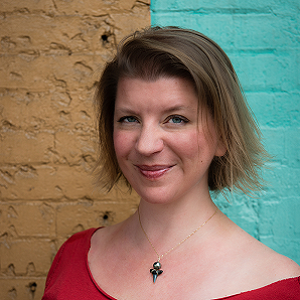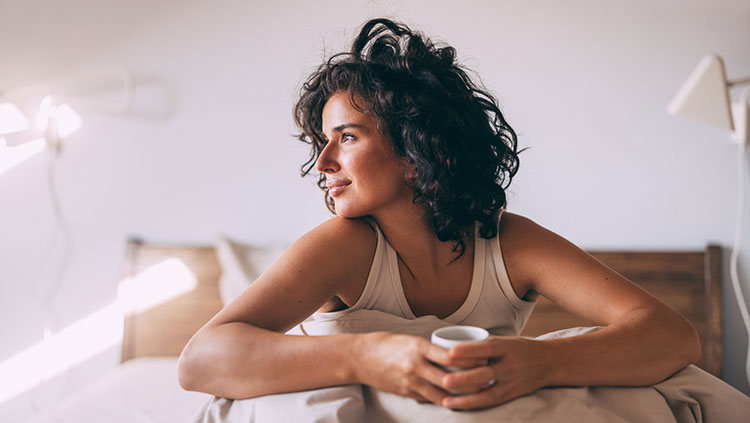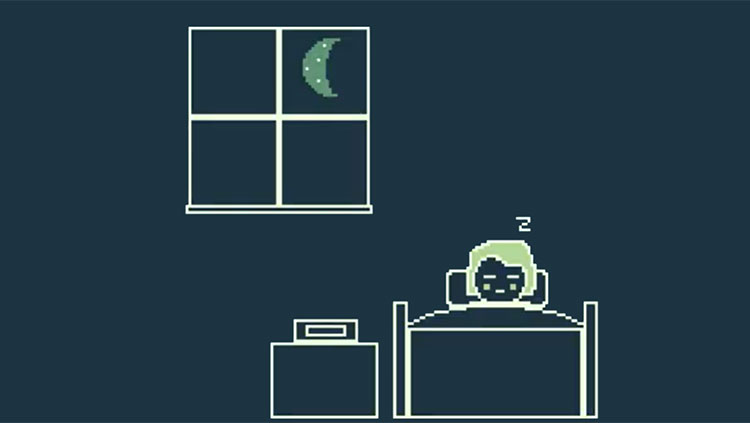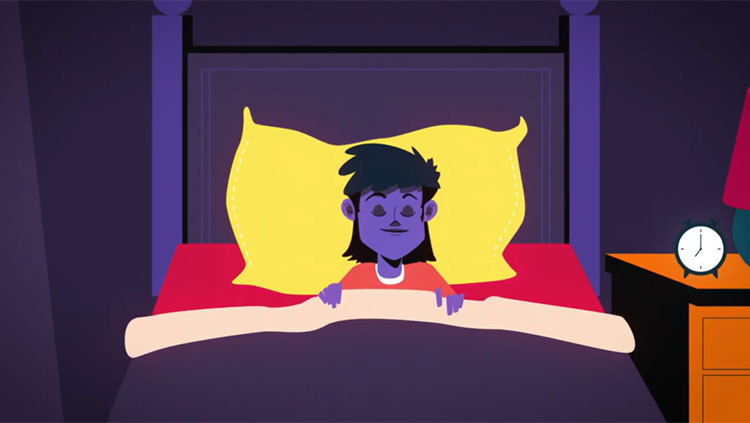Are People Really "Morning Larks" or "Night Owls"?
- Published14 Oct 2019
- Author Kayt Sukel
- Source BrainFacts/SfN

By the time my husband stumbles out of bed each day, grumbling and bleary-eyed, I’ve already had breakfast, walked the dog, and knocked the first few items off my to-do list. He prefers late nights, and even later mornings. I tend to wake up with the sun. When I’ve tried to adapt to my husband’s night-owl schedule, it hasn’t gone so well — staying up late one night usually requires a nap (or two) the next day.
There’s a reason for that. Our sleep schedules aren’t simply personal preferences — they’re innate, biological predispositions. And, new evidence suggests they not only affect when we go to bed but also our physical and mental health.
Such diversity may have benefited our ancestors: having people who are naturally inclined to sleep at different times may have increased the likelihood of survival for hunter-gatherer tribes. Sleep “shifts” would have shortened the window of time where everyone was asleep and the group was most vulnerable to potential threats. Anthropologists call this the sentinel theory. Over the centuries, a combination of genetics and environment have made it so some of us have evolved to feel at our best during daylight hours, while others thrive at night.
Morning people prefer to rise with the sun and feel the most energetic earlier in the day. Night owls, on the other hand, sleep later into the day, perhaps even past noon, and reach their peak after the sun goes down. The differences between these two sleep patterns, or chronotypes, transcend an individual’s preferred bedtime, says sleep researcher Daniel Kripke.
The internal clocks governing our sleep and wake times affect nearly every bodily function — body temperature, hormone production, metabolism, and brain activity. All of these fluctuate in a 24-hour cycle. The time of day when your brain is at peak performance depends on your chronotype, says Kristen Knutson, a sleep researcher at Northwestern University.
Your chronotype may also put you at risk for certain diseases. Several studies have now linked chronotype to increased risk of depression, obesity, diabetes, and even substance abuse. In a 2018 study that looked at more than 32,000 nurses, researchers found night owls were slightly more likely to be depressed than their morning lark colleagues.
And, it goes both ways: depressed people are more likely to be night owls, says Kripke, an emeritus professor of psychiatry at the University of California, San Diego. “Depressed people tend to have delayed peaks and troughs in their body rhythms.”
Still, Kripke cautions that night owls are also more likely to have lifestyle habits that disturb sleep — poor eating habits, lack of regular exercise, and alcohol, tobacco, and caffeine use — which could also put them at a greater risk for depression and other health problems.
Knutson’s own work supports this idea. In 2018, she and her colleagues found night owls were more likely to die at an earlier age than morning larks. But, being a night owl doesn’t mean you are doomed to a shorter life span. “I hope that people don’t conclude that there’s something inherently unhealthy about being a night owl, because there’s not,” Knutson says.
The real danger, Knutson thinks, is that the modern world caters to morning larks — night owls have to fight their innate sleep timing in order to fit in. “Trying to be a night owl in a morning lark world can affect how you sleep, how you eat, and how you exercise — all things we know can affect mood and overall health.”
Rather than fighting your chronotype, she recommends people try to live in sync with their body’s natural circadian rhythms.
“It’s hard to fight your circadian rhythms,” she says, noting that doing so means fundamentally resynchronizing them. “You can do it with a rigid sleep schedule and avoiding light at the wrong times, but it takes very consistent, very disciplined behavior.”
Ideally, we could figure out when we feel most awake and work during those times. But most people don’t have the luxury of finding jobs that accommodate their chronotype.
For night owls who can’t readjust their work schedules, Knutson says they need to be extra careful about maintaining a healthy lifestyle, including eating a healthy diet, exercising regularly, and getting enough sleep.
CONTENT PROVIDED BY
BrainFacts/SfN
References
Horne, C. M., & Norbury, R. (2018). Exploring the effect of chronotype on hippocampal volume and shape: A combined approach. Chronobiology International, 35(7), 1027–1033. doi: 10.1080/07420528.2018.1455056
Jones, S. E., Lane, J. M., Wood, A. R., van Hees, V. T., Tyrrell, J., Beaumont, R. N., … Weedon, M. N. (2019). Genome-wide association analyses of chronotype in 697,828 individuals provides insights into circadian rhythms. Nature Communications, 10(1), 343. doi: 10.1038/s41467-018-08259-7
Kalmbach, D. A., Schneider, L. D., Cheung, J., Bertrand, S. J., Kariharan, T., Pack, A. I., & Gehrman, P. R. (2017). Genetic Basis of Chronotype in Humans: Insights From Three Landmark GWAS. Sleep, 40(2). doi: 10.1093/sleep/zsw048
Knutson, K. L., & von Schantz, M. (2018). Associations between chronotype, morbidity and mortality in the UK Biobank cohort. Chronobiology International, 1–9. doi: 10.1080/07420528.2018.1454458
Kripke, D. F. (2016). When our body clocks run late: Does it make us depressed? Annals of Translational Medicine, 4(9), 178–178. doi: 10.21037/atm.2016.04.20
Peres, I., Vetter, C., Blautzik, J., Reiser, M., Pöppel, E., Meindl, T., … Gutyrchik, E. (2011). Chronotype Predicts Activity Patterns in the Neural Underpinnings of the Motor System During the Day. Chronobiology International, 28(10), 883–889. doi: 10.3109/07420528.2011.619084
Schmidt, C., Collette, F., Reichert, C. F., Maire, M., Vandewalle, G., Peigneux, P., & Cajochen, C. (2015). Pushing the Limits: Chronotype and Time of Day Modulate Working Memory-Dependent Cerebral Activity. Frontiers in Neurology, 6. doi: 10.3389/fneur.2015.00199
Vetter, C., Chang, S.-C., Devore, E. E., Rohrer, F., Okereke, O. I., & Schernhammer, E. S. (2018). Prospective study of chronotype and incident depression among middle- and older-aged women in the Nurses’ Health Study II. Journal of Psychiatric Research, 103, 156–160. doi: 10.1016/j.jpsychires.2018.05.022
Xiao, Q., Garaulet, M., & Scheer, F. A. J. L. (2019). Meal timing and obesity: Interactions with macronutrient intake and chronotype. International Journal of Obesity, 43(9), 1701–1711. doi: 10.1038/s41366-018-0284-x
Also In Sleep
Trending
Popular articles on BrainFacts.org

















